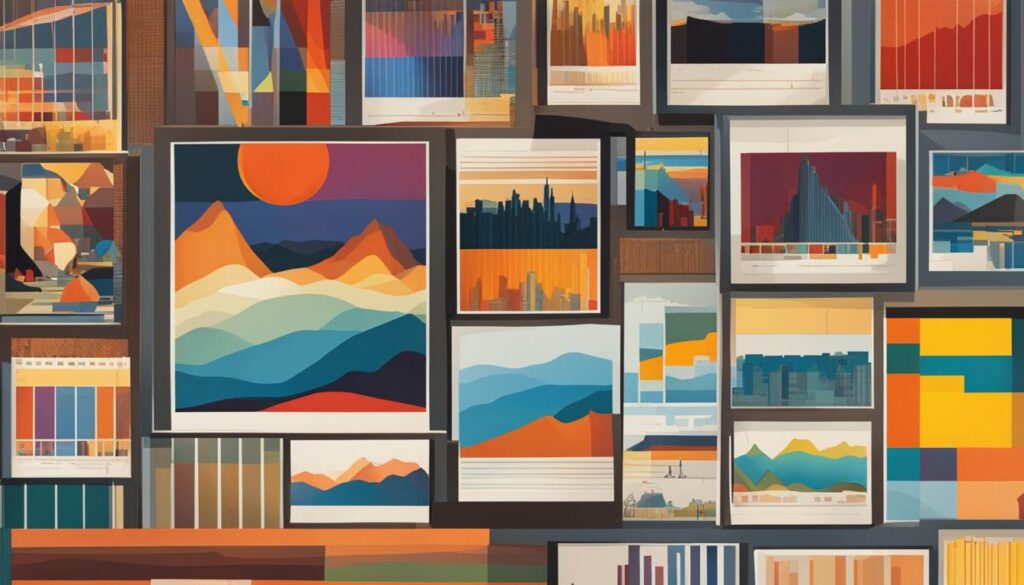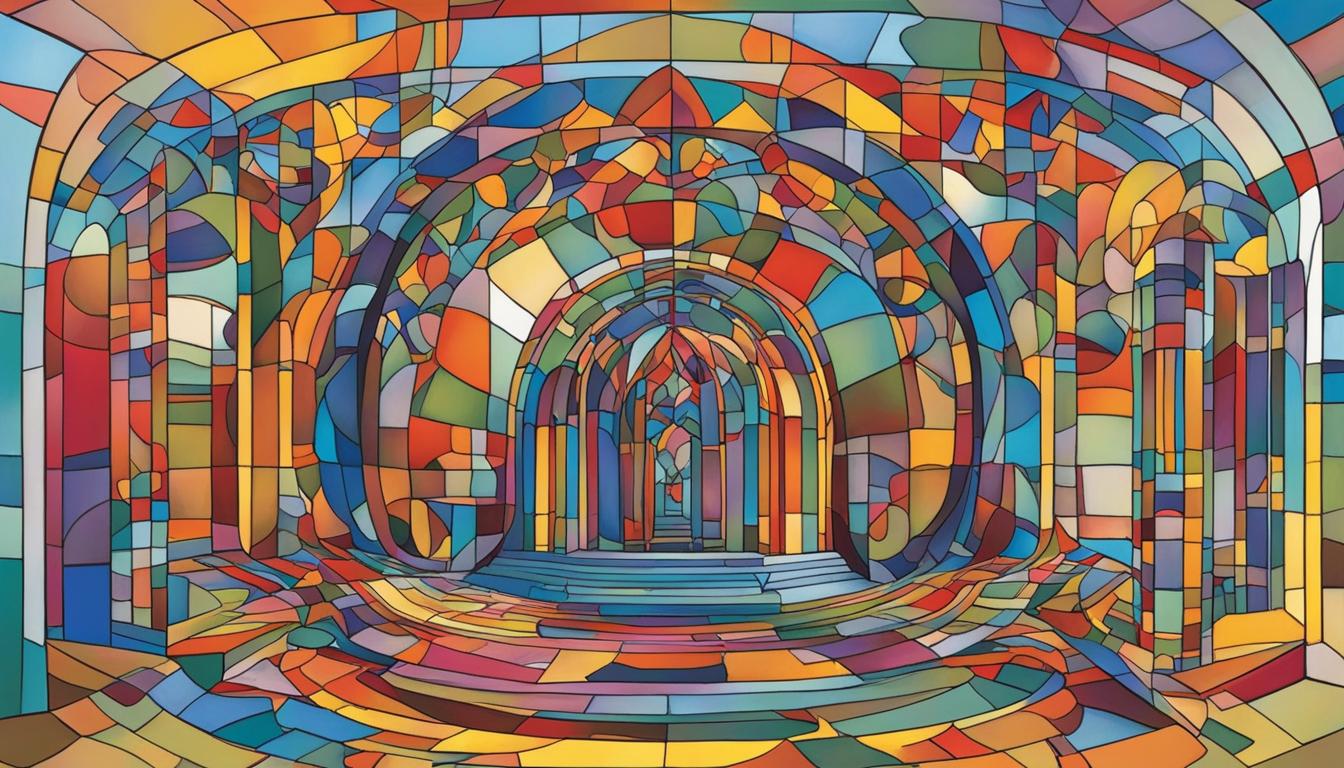If you’re interested in learning more about the world of art valuation, look no further than Judith Benhamou-Huet’s “The Worth of Art: Pricing the Priceless.” In this book summary, we delve into the intriguing topic of art valuation and explore the complex process of determining the value of art.
From historical perspectives to market forces and controversies, this book covers a broad range of topics related to art valuation. Join us as we gain insight into the ever-evolving dynamics that shape the worth of artwork.
Introduction to Art Valuation
Art valuation is a complex and multi-faceted process that involves various factors in determining the value of artwork. Whether it’s a painting, sculpture, or any other form of art, several elements contribute to an artwork’s worth. These include the artist’s reputation, the historical significance of the piece, its rarity, and its condition, among others.
In assessing the value of art, it is essential to take into account the aesthetic qualities, technical execution, and originality of the artwork. The evaluation process is subjective and varies based on the art’s specific characteristics and the valuer assessing it.
However, while art valuation may seem challenging, it is crucial in determining the market value of art. As a result, it is essential to have professionals that are highly skilled in appraising works of art and understanding their context, history, and value.
The Process of Determining Art Value
The process of determining an artwork’s value involves a range of factors that are typically categorized into the following:
- Artist-Related Factors
- Historical Factors
- Market-Related Factors
- Physical Condition of the Artwork
Artist-Related Factors
An artist’s reputation plays a significant role in an artwork’s value. Not only does an artist’s critical acclaim impact artwork value, but their historical significance does as well. The artist’s contribution to art history, their level of innovation, and artistic quality are all critical in determining the worth of an artwork.
Historical Factors
The historical importance of an artwork is also a crucial factor in art valuation. Historical context, cultural significance, and provenance are all critical considerations when assessing the value of an artwork.
Market-Related Factors
Market forces, such as supply and demand, significantly impact art valuation. Changes in the market, shifts in preferences or interests of buyers, as well as changes in the economy, are significant factors that can cause fluctuations in the value of artwork.
Physical Condition of the Artwork
The final critical factor in determining an artwork’s value is the state of the artwork itself. The condition of the artwork, any damages, repairs, or restoration work can significantly impact an artwork’s overall value.
TABLE: Factors that Contribute to Art Valuation
*Note: This table contains a non-exhaustive list of factors and is not meant to be comprehensive
“Determining an artwork’s value involves the consideration of a range of factors that contribute to its worth. As a result, the art valuation process requires a deep understanding of the artwork’s history, context, and current market trends.”
Historical Perspectives on Art Valuation
The history of art valuation spans centuries, from the early Renaissance through to the present day. During this time, the perception and pricing of art have undergone significant changes, reflecting shifts in cultural attitudes, artistic styles, and the interplay of market forces.
In the Renaissance era, artists were regarded as skilled craftsmen, and their works were valued primarily for their technical mastery rather than their aesthetic qualities. As art evolved and became more expressive and emotional, ideas of artistic merit shifted, and the role of the artist as an individual genius emerged.
During the 19th century, the art market saw significant growth, as new forms of art collecting emerged, and the status of art as a symbol of wealth and power increased. This era also saw the establishment of pioneering auction houses, such as Sotheby’s and Christie’s, that shaped the contemporary art market’s structure.
In the 20th century, the value of art received widespread recognition as a lucrative investment, surpassing its cultural and societal value. The art market became a global industry, with galleries and museums around the world exhibiting contemporary art, and auction houses conducting high-profile art sales.
Today, art valuation remains an intricate and ever-evolving process, shaped by a range of cultural, historical, and market-driven factors. Understanding this evolution is crucial in comprehending how the art market functions in the modern era.

The Role of Artists and Critics in Art Valuation
The valuation of artwork is a complex process that involves various factors, including artist influence and critical acclaim.
An artist’s reputation and background can have a significant impact on the value of their artwork. For example, the work of established artists such as Pablo Picasso or Vincent Van Gogh is highly regarded and valued due to their historical significance and contribution to the art world. On the other hand, emerging artists may have to work harder to establish themselves in the market, and their artworks may not command the same prices as those of their more established counterparts.
Critical acclaim also plays a crucial role in art valuation. Positive reviews and recognition from influential art critics can significantly impact the value of an artist’s work. For example, a glowing review in a renowned art publication can bolster an artist’s reputation and result in increased demand for their work, ultimately driving up its value.
“In the art world, reputation is everything, and an artist’s reputation can sometimes be more valuable than their actual artwork.”
The relationship between the artistic community and the market is also crucial. It is a delicate balance that requires considering both the artistic value of a work and its monetary value in the market. This dynamic can sometimes lead to conflicts, with artists worrying that their work is being undervalued or overvalued by the market.
Famous Artists and Their Impact on Art Valuation
| Artist | Artistic Style | Impact on Art Valuation |
|---|---|---|
| Pablo Picasso | Cubism, Surrealism | Established as one of the most influential artists of the 20th century, Picasso’s work commands high prices at auction due to its historical significance and aesthetic value. |
| Jean-Michel Basquiat | Neo-Expressionism | Basquiat’s rise to fame in the 1980s was propelled by his artistic genius and his reputation as a rebel against the establishment. His death at a young age cemented his legacy, and his work continues to command high prices today. |
| Jackson Pollock | Abstract Expressionism | Pollock’s signature drip paintings revolutionized the art world and are considered some of the most important works of art of the 20th century. His paintings consistently fetch high prices at auction due to their artistic value and historical significance. |
The impact of artists and critics on art valuation cannot be overstated. It is a complex dynamic that involves assessing both the artistic and monetary value of a work and taking into consideration the broader context of the art world. Understanding this relationship is crucial for anyone looking to navigate the world of art valuation.
Market Forces in Art Valuation
The value of an artwork may fluctuate depending on various market forces, such as market demand, economic conditions, and pricing trends. Art collectors and investors are often on the lookout for highly sought-after artworks that can potentially increase in value over time.
Market demand plays a crucial role in art valuation. The perceived value of an artwork is often determined by the number of potential buyers willing to pay a certain price for it. Certain artists or art movements may have greater demand than others, driving up the value of their artworks.
Economic fluctuations can also impact pricing trends in the art market. During periods of economic prosperity, art prices may rise, while during a recession, they may stagnate or decrease. Understanding the impact of economic conditions on art valuation is essential for art investors and collectors.
The role of auctions and galleries in shaping the art market is also significant. Auction houses, such as Sotheby’s and Christie’s, often set art prices for highly sought-after artworks. Galleries can also play a crucial role in shaping the market demand for certain artists, helping to increase their overall value.
The Importance of Provenance and Rarity
Provenance and rarity can significantly impact the value of an artwork in the market. Artworks with a clear and documented history of ownership, or those with a personal connection to a significant historical figure, can command higher prices. Similarly, rare artworks, such as those from a limited edition, can be highly sought after and increase in value over time.
“Rarity, importance, and demand are just some of the factors that contribute to the value of an artwork in the market.”
| Key Factors in Valuing Art | Description |
|---|---|
| Rarity | Artworks that are rare or hard to come by tend to command higher prices in the market. |
| Provenance | The history of ownership and exhibitions of an artwork, if they are clear and documented, can positively impact its value. |
| Demand | High demand for a particular artist or style of artwork can increase its market value. |
| Critical Acclaim | A positive critical reception can influence the value of an artwork in the market. |
| Economic Conditions | Art prices tend to rise during economic prosperity and stagnate or decrease in times of economic recession. |
The art market is a complex system that is influenced by various market forces. By understanding the factors that drive the demand for certain types of artwork, and the impact of economic fluctuations on pricing trends, art investors and collectors can make informed decisions about valuing art.
The Importance of Context and Historical Significance
Valuing art involves much more than simply assessing its aesthetic qualities. The historical context of an artwork and its cultural significance also play a vital role in determining its value. Indeed, understanding the broader context surrounding an artwork can provide valuable insights into the artist’s intentions, the work’s original reception, and its subsequent influence.
For example, a painting created during a significant historical event or movement may be more highly valued than a similar work created outside of such a context. Similarly, an artwork that was instrumental in shaping a particular art movement or style may be deemed more valuable than a lesser-known work from the same period.
Consider the famed Mona Lisa, arguably one of the most recognizable paintings in history. While its aesthetic qualities are undoubtedly remarkable, it is the painting’s unique historical significance that truly sets it apart. Created during the Italian Renaissance, the painting is believed to have been commissioned as a portrait of the wife of a Florentine merchant. Its ownership then passed through various royal and aristocratic collections during the following centuries, until the Louvre Museum in Paris acquired it in 1797 at the behest of Napoleon Bonaparte.
Today, the Mona Lisa is not only valued for its artistic merit, but also for its historical significance and cultural legacy. Its fame has made it a cultural icon and a magnet for tourists from around the world.
“To truly appreciate and value a work of art, it is crucial to understand the context in which it was created and the impact it had on subsequent art movements and cultural developments.”
Technology and Art Valuation
The advancement of technology has had a significant impact on the art market, particularly regarding the valuation of digital art. The emergence of online platforms has created new challenges and opportunities for artists, collectors, and dealers alike, presenting complexities in the traditional methods of valuing artwork.
The digital art market comprises works that are created, distributed, and displayed digitally, utilizing modern technology such as virtual and augmented reality. The use of technology in artmaking has created a new form of aesthetic practice that challenges traditional notions of physicality, authenticity, and ownership.
“With the rise of digital technology, we have seen the emergence of new mediums for artists to explore and a new generation of collectors seeking to acquire these works,”
The digital nature of these artworks presents difficulties in assessing their value, as they are often easily reproduced and shared online. Therefore, determining an artwork’s scarcity and rarity, which are significant factors in the traditional art market, becomes more challenging in the digital realm.
Furthermore, as the digital art market continues to expand and evolve, it confronts issues of copyright and authenticity, as well as the blurring of lines between original and copy. Despite these challenges, curators, art dealers, and auction houses are increasingly embracing digital art, showcasing it in museums, galleries, and online platforms.
The Rise of NFTs in Digital Art Valuation
The emergence of non-fungible tokens (NFTs) has brought new possibilities for digital art valuation. NFTs verify ownership and authenticity of digital art and enable the creation of unique, one-of-a-kind experiences for collectors. NFTs allow creators and collectors to have control over the artworks they produce and collect, opening up new revenue streams and creating a more secure environment for digital art transactions.
| NFT Sales in the Art Market | Price |
|---|---|
| Beeple’s “The First 5,000 Days” | $69 million |
| CryptoPunk #3100 | $7.6 million |
| Grimes’ “WarNymph Collection” | $6 million |
The use of NFTs in digital art valuation is still a relatively new concept, and the market is subject to volatility and speculation. However, as the art world continues to adapt to technological advancements and embrace digital practices, the role of NFTs in the valuation of digital art is likely to expand.
As the digital landscape continues to evolve, art valuation must adapt to these changes. Technology presents both challenges and opportunities in the valuation of artwork, and it is important to consider how these advancements impact traditional methods of assessing the worth of art.
Controversies in Art Valuation
Art valuation is a complex and often controversial process, with disputed valuations often sparking debates within the art world. There are various factors and perspectives that can contribute to controversial art prices, from the perceived reputation of an artist to the emotional and cultural connections that individuals form with certain pieces of artwork.
One notable example of a disputed art valuation is the case of the Salvator Mundi painting by Leonardo da Vinci. The artwork was sold for a record-breaking $450 million in 2017, but its authenticity and condition have been a subject of debate among art experts and historians. The painting’s attribution to da Vinci and its restoration process have been called into question, leading to a heated controversy around its value.
“The controversy surrounding the Salvator Mundi is a perfect example of how art valuation can be subjective and contentious. The questions around the painting’s condition and attribution have sparked a debate within the art world, highlighting the intricacies and complexities of valuing art.”
Another example of a controversial art price is the case of a sculpture by Jeff Koons titled “Rabbit.” The artwork sold for $91 million at auction in 2019, breaking records for a living artist’s work. However, the high price of the work has been criticized as being inflated, with some arguing that it is not worth the price tag attached to it.
Overall, controversies in art valuation can arise for various reasons, from a lack of consensus among experts to the influence of external factors such as market demand. These disputes can lead to challenging questions around the role and value of art in society and the process of determining its worth.
Conclusion
Art valuation is undoubtedly a complex process, requiring a broad range of knowledge and expertise across multiple domains. Through our exploration of Judith Benhamou-Huet’s “The Worth of Art: Pricing the Priceless,” we’ve gained insight into the various factors that contribute to determining the value of artwork, from historical context and critical acclaim to market forces and technological advancements.
While the process of valuing art may never be entirely objective, it’s clear that the intricacies of art valuation are essential in shaping the dynamics of the art market. Whether you’re a collector, artist, critic, or simply an art enthusiast, understanding the complexities of valuing art is critical in gaining insight into the ever-changing world of art.
So, in conclusion, we highly recommend “The Worth of Art: Pricing the Priceless” to any individual looking to gain a deeper understanding of art valuation. This book provides a comprehensive exploration of the historical and contemporary dynamics that shape the worth of artwork, making it an invaluable resource for anyone interested in the complex process of valuing art.
Thank you for joining us on this journey into the world of art valuation. We hope this book summary has provided valuable insights and inspired further exploration into the fascinating and ever-evolving world of art.



